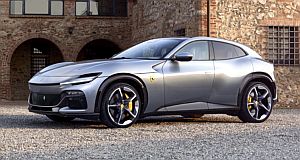Make / Model Search
News - Market Insight - Market Insight 2023Market Insight: Luxury cars vs SUVsSUV march extends its reach into luxury segment as car buyers desert14 Apr 2023 By NEIL DOWLING AUSTRALIANS continue to show declining interest in passenger cars as the range, price and sheer size of the streetscape of SUVs overwhelms the once bread-and-butter sector of the market.
While that may bring few surprises, it is the extent of the bias to SUVs at the expense of the traditional sedan that is becoming unprecedented.
SUVs are the go-to new vehicle for most buyers. Look around and the roads are weighted with SUVs and it is something prospective buyers quickly notice and translate into vehicle selection.
Data from the FCAI’s monthly Vfacts reports show the swing by numbers and that there appears no plateauing on the horizon. Overall, year-to-date figures for the first quarter of 2023 show SUVs command 57.5 per cent of the new-car market (excepting heavy vehicles) while passenger cars represent only 19.5 per cent.
Part of the problem is that there are so many classifications within specific genres. There are large cars and also upper-large cars, based on physical size rather than price. The same happened to SUVs, with large and upper large, the latter divided into sub-$120,000 price tags and those costing more.
The trend has no price barrier. The large car sector shows the devastation produced by the massive swing to SUVs.
In 2022, only 4874 new large cars – including the Kia Stinger, Audi A6, BMW 5 Series, Jaguar XF and Mercedes E-Class – found buyers.
A decade earlier, in 2012, sales in the sector were 61,531 units. That is a 92.1 per cent – or 56,657 unit – collapse in the car market.
Back then, there were 21 players with the dominant being the (now deceased and the reason is clear) Holden Commodore, Ford Falcon and Toyota Aurion.
Those three were responsible for 53,642 of the sector’s sales in 2012.
Meanwhile, the equivalent SUV sector, the large SUV category, trended upward – but not with the same enthusiasm – by 13 per cent in the same 10-year period.
In 2012 there were 35 entrants (from 24 brands) in this class and by 2022 it swelled to 45 models from 26 manufacturers.
Growth has increased by 13 per cent in the period which does not account for the fall in large car numbers, indicating buyers have spread their purchasing decisions into other sectors.
The upper-large car segment – Mercedes S-Class, Audi A8, Bentley Flying Spur and BMW 7 Series among the rich list – did not fare much better despite the rarefied air enjoyed by the clientele.
Its sales are now only 19 per cent of the volume achieved in 2012.
The equivalent, the upper-large SUV bracket, has shown significantly better performance. In the 10 years, buyers went from 14,735 to last year’s 22,201 – a growth of 7466 units or a rise of 33.6 per cent.
The increase in numbers has come predominantly from the release of new models driven by customer demand.
In that period, players have gone from six models (five manufacturers) to 2022’s list of 12 (10 manufacturers) that introduced the segment to new products for the first time from Aston Martin, Bentley, Lamborghini, and Rolls-Royce. Ferrari will follow next year.  |
Click to shareMarket Insight articlesResearch Market Insight Motor industry news |









Facebook Twitter Instagram